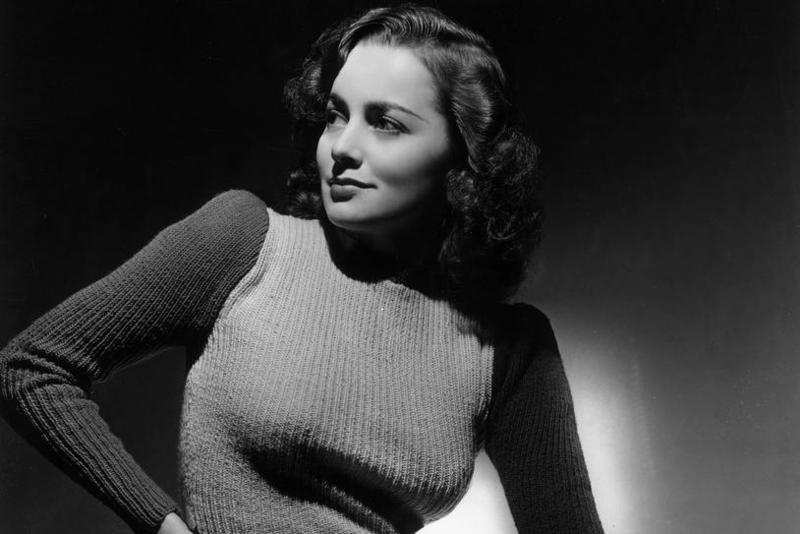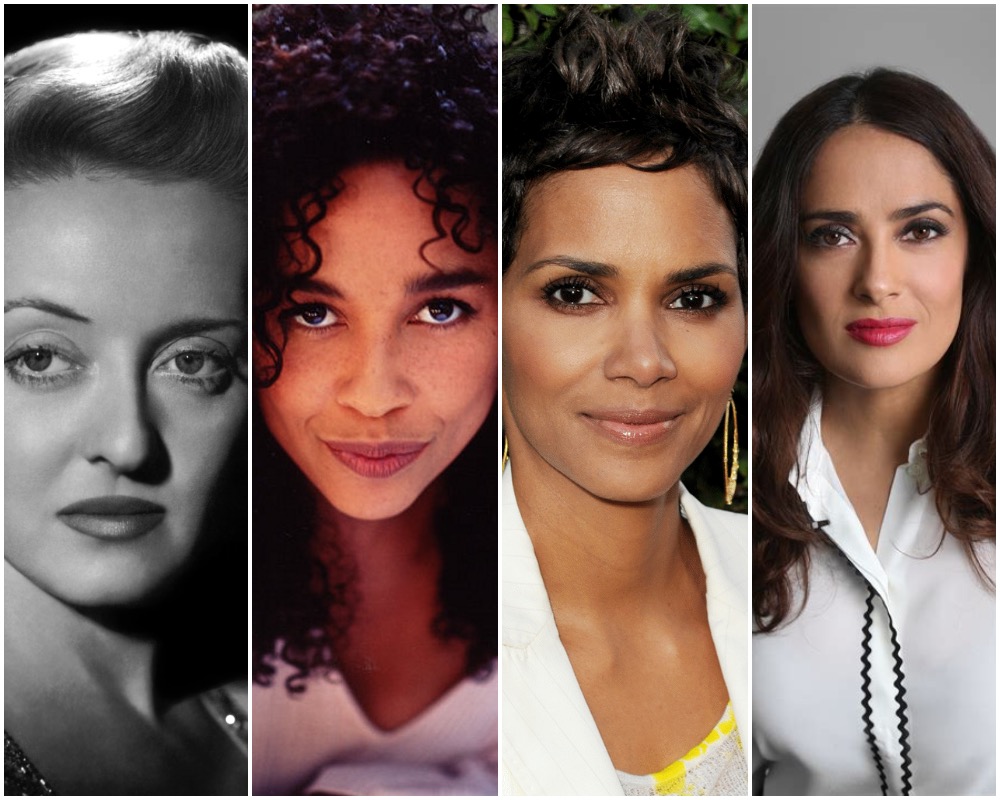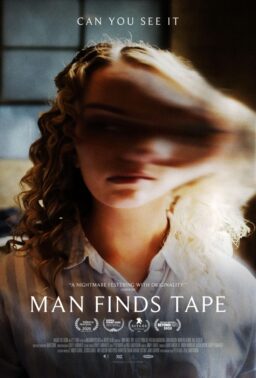When the revelations of rampant sexual harassment and assault against former Miramax CEO Harvey Weinstein came out last October, industry veterans on social media commented about how much of an open secret it was. In its wake it revealed a string of actresses whose careers, once promising, were derailed after refusing Weinstein’s advances. Since then the movement against sexual harassment in Hollywood—from #MeToo to #TimesUp—has brought forward one word that’s brought down the careers of many females and was utilized by Weinstein against those who rebuffed him: difficult. Difficult is far from a career killer for male actors; Mel Gibson’s aggressive temperament has become a part of his filmic persona. But looking at its connection to actresses throughout film history, and especially its ability to stall or outright stop a female’s career, showcases it as a term of inherent sexism, labeled and controlled by men to demean and undermine female agency.
The history of Hollywood is the history of male power, with men as gatekeepers at all levels of stardom. Actresses rumored to have hit the “casting couch” in their career have been looked down on for their presumed promiscuity, ignoring the issues inherent in these unbalanced power dynamics. The recent allegations against Hollywood manager Vincent Cirrincione remind people that these issues don’t live and die with CEOs. The unequal gender ratio on film sets leave actresses deciding whether speaking out is worth their career.
A casual Google search of the term “difficult actress” leads to a litany of lists with arbitrary “reasons” masquerading as logical explanations. “[X] uses foul language. [X] asked for an exorbitant amount of money.” Sometimes a clear-cut example isn’t even required to give audiences specific unkind thoughts about a star, as evidenced by a 2012 article by author Alexis Rhiannon that chastised actress Anne Hathaway for giving off vibes strong enough to “rub [Rhiannon] the wrong way.”

When it comes to an actress’ stardom, success is never attributed to the individual, but failure is. Since the revelations against Weinstein started it has left people to say, “I always wondered what happened to her.” Before Weinstein’s actions were exposed the common refrain was “I heard they were hard to work with.” Reasons for this title are often vague and inconsistent, and it is only now, in the wake of declarations from actresses like Annabella Sciorra, Mira Sorvino and Ashley Judd that the “difficult actress” has a face and is revealed as the facade it has always been.
Actresses put their lives in the hands of (usually) male directors, agents and managers, so the feeling that Hollywood is a boy’s club becomes painfully true, forcing women to play the game or get out. In actress Uma Thurman’s recent denouncement of director Quentin Tarantino—where she alleges he placed her in an intentionally dangerous situation to secure a shot—left her conflicted. She was “afraid” to do the stunt but was swayed by Tarantino’s “furious” anger to put aside her demands that the stunt be done with a professional driver. Tarantino is just one example of the idea that actresses’ can only act under duress. Bernardo Bertulucci acknowledged he filmed a violent rape scene in 1972’s “Last Tango in Paris” without the full consent of actress Maria Schneider, and on the set of the 2004 film “Crash” director Paul Haggis didn’t alert actress Thandi Newton that co-star Matt Dillon would touch her inappropriately during an assault scene.
The idea that men are “bosses” and women are “bossy” isn’t new, and the Weinstein issues kicked off the mentality inherent in men who lord their dominance over women. As seen with ‘90s darlings like Sciorra, Sorvino and Judd, it wasn’t anything felt by the audiences, but what wasn’t felt by them in regards to their superior, Weinstein. Weinstein worked as part of a continuum that is often at the core of the “difficult woman” paradigm. It wasn’t just Weinstein’s own anger at being rejected, but his application of a term stuffed with preconceived notions that he knew would have a desired result. Directors Peter Jackson and Terry Zwigoff stated they didn’t hire Judd and Sorvino for specific roles in their project, either as a direct result of hearing the actress was “a nightmare to work with” or through an unspoken directive that the actress wasn’t wanted. A hint of Judd’s alleged nightmarish personality was enough for Jackson to, without consulting her, move on and deny her the role. Jackson and Zwigoff were established directors, able to have their pick of stars for their projects, yet they deliberately avoided female stars who had the presumption of difficulty based on rumor justified by a male authority.

For Jackson, and other males with bargaining power in Hollywood, actresses tread a fine line in order to secure work, and the vague attributes associated with terms like “nightmare,” “hard to handle” and, of course, “difficult” are often worse because they are specious. Actress Linda Fiorentino had a promising career in the early-’90s with noirish features like “The Last Seduction.” Her husky voice and dominating, manipulative characters inspired comparisons to tough dames of the ‘40s like Barbara Stanwyck, and might have contributed to the mentality that Fiorentino was similar to the women she played. Rumors cropped up that Fiorentino was hard to work with. She jumped to the big leagues with the 1997 sci-fi adventure “Men in Black.” Though Fiorentino’s character was prepped to co-anchor the sequel alongside Will Smith, it was reported that Smith’s co-star, Tommy Lee Jones was returning for “Men in Black 2” under the direct stipulation that Fiorentino wasn’t invited back. The reason was left unclear but tabloids reported it was due to her tempestuous nature.
Stories like these followed Fiorentino to her next role in Kevin Smith’s 1999 religious comedy “Dogma.” Tommy Lee Jones and “MiB” director Barry Sonnenfeld never outright discussed their issues with Fiorentino, but Smith was different. He was open in his dislike of the actress, stating he wished he’d gone with his original choice, actress Janeane Garofalo. Fiorentino, to her credit, has never given interviews confirming or denying any of the stories associated with her, leaving Smith’s story and others as de facto “proof.” Because Fiorentino’s rise parallels the proliferation of the internet, specific examples of Fiorentino’s “difficulty” remain undefined. This ambiguity, when coupled with Fiorentino’s removal from film in general, leave audiences to believe the truth is worse than what was publicly stated. Actresses like Fiorentino, whose rise and fall was captured before the 24/7 news cycle and the advent of social media, are often at a disadvantage in the moment, unable to tell their story for decades. Hence why several prominent actresses of the ‘90s—including many of Weinstein’s victims—are only now able to remove the label that once yoked them.
The simplistic moniker of “difficult” represents the sexist belief that actresses are a dime a dozen, expendable and easily replaced. As Amy Nicholson says in a 2016 article asking about the alleged “curse” that plagues Best Supporting Actress winners, “It’s really just a symptom of the movies,” that there’s always a new woman available. A female co-star and possible love interest, like Fiorentino’s “Men in Black” character, can be replaced with little fanfare; no one expects the studio to replace a Will Smith or a Tommy Lee Jones. Couple that with the lack of leading roles for women in general and you witness the high turnover of actresses’ over the decade whose careers ended over trifles.

Halle Berry’s rumored nudity raise is a prime example of how actresses often only derive power in controlling consumption of their bodies. The demand to see female bodies illustrates the worst cases of what the term difficult is utilized for. When the 2001 film “Swordfish” came out director Dominic Sena “joked” about how Halle Berry asked for $500,000 for a six-second topless scene. “$250,000 for each breast,” he said. Berry denied Sena’s story, though received her highest payday at that time of $5 million dollars, still falling $15 million short of her co-star John Travolta. Berry’s pay increase was warranted considering she had recently won a Golden Globe for her turn in “Introducing Dorothy Dandridge” and held a starring role in the “X-Men” series; she’d also win an Academy Award right after, making history as the first African-American woman to win for Best Lead Actress. The implication still remained though that Berry didn’t deserve the money and was outrageous for demanding such an exorbitant sum for what was chalked up as a little nudity.
Actresses of color, like Berry, often have the hardest time escaping the difficult label. The lack of roles for women in general are compounded by continued whitewashing in mainstream cinema. Where the Best Supporting Actress “curse” often finds itself connected to women under forty, it’s associated frequently with women of color who find themselves pigeonholed after winning. Actress Rita Moreno was regularly offered “Mexican spitfire” roles after winning the award in 1961 for “West Side Story.” Actress Hattie McDaniel, the first African-American woman to win the award for 1939’s “Gone with the Wind” infamously said she’d “rather make $700 a week playing a maid than earn $7 a day being a maid.” With actresses of color already limited, rocking the boat in any way becomes more of a risk.
Actress Rae Dawn Chong revealed last November she had been slapped with “D” word after telling her agent about an uncomfortable encounter with actor Steven Seagal. She claims her agent did nothing and her career stopped in its tracks for reasons unknown (though the implication is the accusation caused it). When Lisa Bonet transitioned to cinema she received criticism from her “Cosby Show” boss, Bill Cosby, as well as the media when she went against her girl next door image to make the 1987 film “Angel Heart.” Last year, in a searing op-ed for the New York Times actress Salma Hayek recounted a string of abuse from Harvey Weinstein. As he attempted to assert his control over her she reiterated how she didn’t do anything because “I was a nobody.” Women of color find themselves on rockier footing than their female contemporaries, believing that no matter how much they accomplish they aren’t owed their success.
A difficult woman doesn’t often get a second chance at stardom compared to male counterparts. Chevy Chase, Edward Norton, Bill Murray and Val Kilmer have all been cited as hard to work with; Kilmer himself, in a 2011 A&E Biography episode acknowledged his domineering nature. But unlike actresses, whose success is either attributed to their work in a specific genre, starring alongside a more well-known star, or winning an award, an actor’s career is fully attributed to his individual talent, giving him unlimited chances to redeem himself or hone his films accordingly.

Women have rebelled against this power dynamic. Bette Davis and Joan Crawford frequently went on studio suspension when they didn’t like the treatment they received. Considering the inherently sexist atmosphere, with men in every facet of power, tactics like this—decried as petty and proof of their unprofessionalism—were appropriate and necessary. Some actresses rebelled by hitting a studio with legal repercussions. Davis and Olivia De Havilland (pictured above) both sued their studio, Warner Bros., after being typecast and forced to take roles beneath their capabilities. Davis’ suit was unsuccessful, but when De Havilland took Warners on in 1943 it transformed the contracts actors signed, allowing them greater independence in their roles; De Havilland and Davis maintained healthy careers for decades after.
Actresses take their careers into their own hands, both to assert their own agency and hopefully balance the gender ratio. In the wake of Davis and De Havilland’s own rebellions, actress Ida Lupino turned to directing. When Lupino’s home studio, Paramount, kept sticking her in lackluster roles she went the suspension route. Fortuitously, these suspensions gave her the opportunity to watch male directors. She translated that into films that analyzed difficult topics, including 1950’s “Outrage” which recounts the aftermath of a woman who’s been raped. Barbra Streisand, for years labeled a perfectionist, transitioned to directing with her 1991 feature “The Prince of Tides” which was later nominated for Best Picture. Since then more female stars have turned to directing, including Jodie Foster and Angelina Jolie, telling stories they believe are important and relevant to audiences today.
But what’s revolutionary about the “difficult woman” is they’ve become bigger in the decades since Lupino and De Havilland, taking control in a new direction. Drew Barrymore, Reese Witherspoon, and Jessica Chastain have all started their own production companies. Several prominent actresses, female showrunners, and other celebrity personalities started #TimesUp, itself demanding gender parity in Hollywood. All of this denotes a sea change, taking the term that has long kept women silent and applying it to the Hollywood business model so it will work to their advantage.
Difficult is a gendered term fueled by the Hollywood machine AND maintained by the belief that actresses aren’t responsible for the achievement of their films. The difficult term lives and dies with men who assume it’s enough to demean or destroy. Until the power is removed from the word, the word will always have power, and based on recent events it seems that “time’s up” on the myth of the difficult woman.











